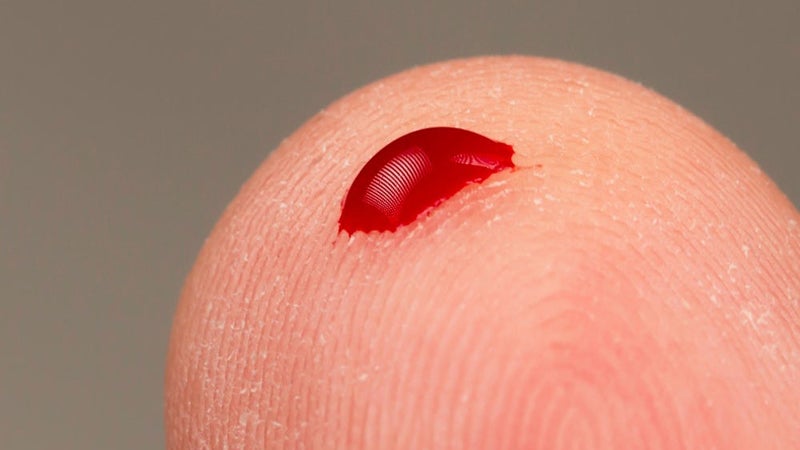
A research team at KTH Royal Institute of Technology in Sweden is developing a glucose monitoring device that is said to be 50 times smaller than the needles used in existing continuous glucose monitoring (CGM) systems.
The new microneedle patch is designed to directly measure in the skin, where there are no nerve receptors to detect the pain, making it virtually painless.
Testing of the microneedle patch’s prototype, in combination with a miniature three-electrode enzymatic sensor on a human subject, demonstrated more accurate tracking of blood glucose levels over time.
The researchers plan to further develop a transferable adhesive patch with algorithms and embedded electronics as a fully-realised system for assessment in clinical trials.
The glucose monitor will remove the need for finger pricks multiple times a day for CGM.
Existing CGMs require a minimum 7mm needle, which is inserted into the skin and takes measurements in the fat tissue. On the contrary, the new microneedles are based on natural capillary action that fills up with interstitial fluid surrounding the skin cells.
How well do you really know your competitors?
Access the most comprehensive Company Profiles on the market, powered by GlobalData. Save hours of research. Gain competitive edge.

Thank you!
Your download email will arrive shortly
Not ready to buy yet? Download a free sample
We are confident about the unique quality of our Company Profiles. However, we want you to make the most beneficial decision for your business, so we offer a free sample that you can download by submitting the below form
By GlobalDataKTH Royal Institute of Technology Division of Micro and Nanosystems doctoral student Federico Ribet said: “Our solution is painless to the user. We measure directly in the skin, and there are no nerve receptors that detect pain, just a fine mesh of very tiny blood vessels.
“An important distinction is that unlike commercially available CGMS which measure the subcutaneous fat tissue, ours measures within the skin less than 1mm deep, where the interstitial fluid follows closer and more homogeneously the blood-glucose oscillations.”



